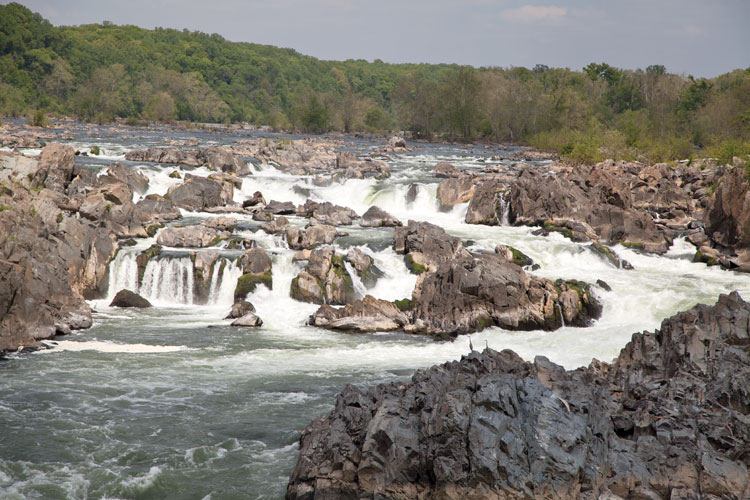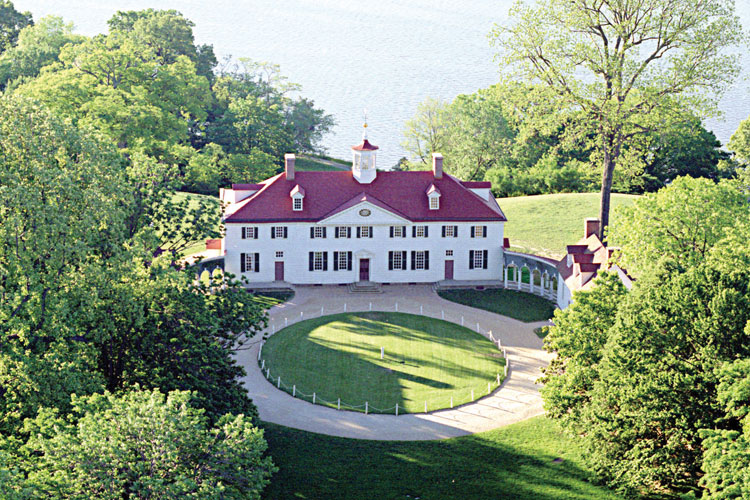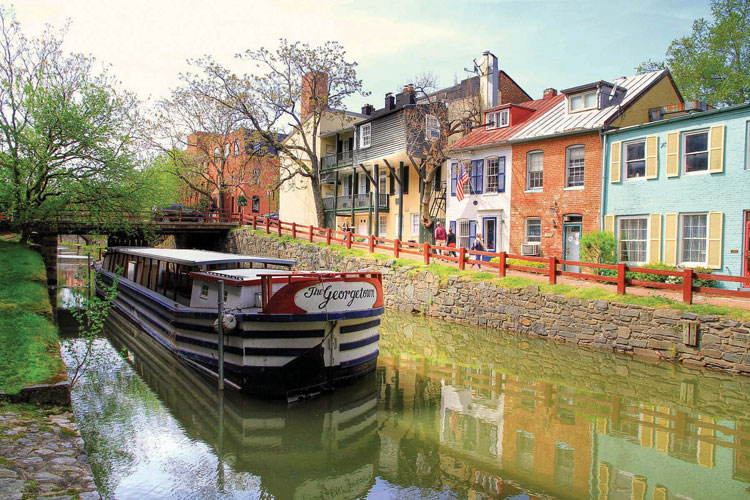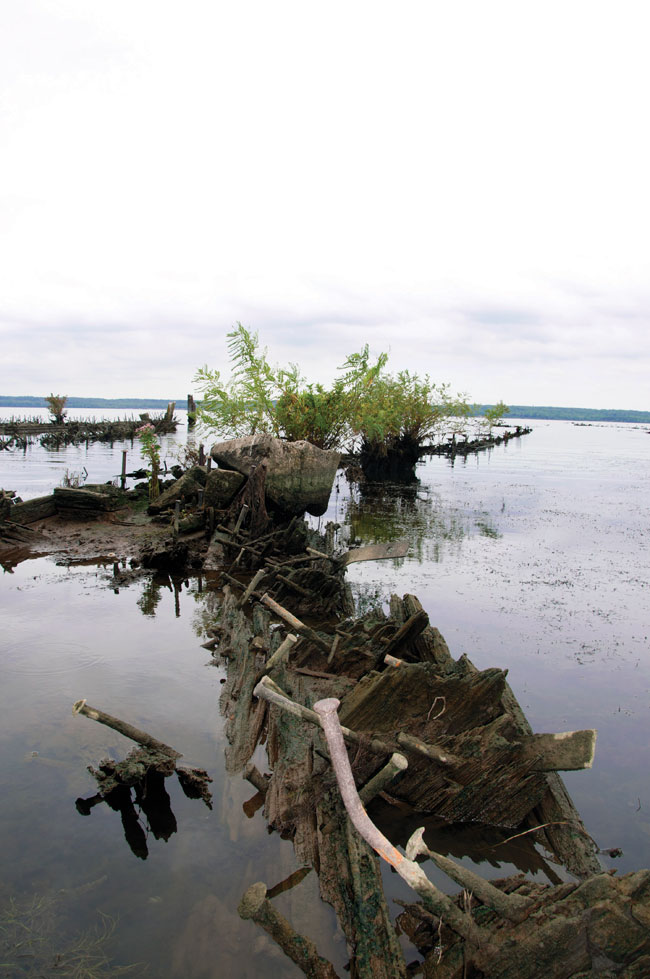Sailors from around the world congregated this month on the Chesapeake Bay’s historic Annapolis docks to experience the only remaining “in-water” sailboat show in the world. What many out-of-towners might not know is their close proximity to another historic port town that lies on the Potomac River a mere 30 miles west of Annapolis on Route 50: the Nation’s Capital.

Yes, the Chesapeake Bay’s charmed port city and annual host of the boat show was incorporated over 80 years earlier than the passing of the 1790 Residence Act that approved development of the City of Washington. But the Potomac River’s rich history, its unique beauty, and the fact that its history is still unfolding make a trip to visit the many landmarks that reside along its banks a worthwhile outing.
It was two pre-existing settlements and major port towns—Georgetown, MD, and Alexandria, VA—and not the river’s beauty that led George Washington to envision a “federal city” along the Potomac (plus the Pennsylvania Mutiny of 1783). The Potomac’s strong flow and daily tidal lift resulted in a channel that was navigable year-round from Georgetown down to the Bay. Situated on the fall line, Georgetown was the farthest point upstream that ocean-going vessels could navigate the river.
The variety of water environments—rapids, urban river, or wide bay—along the Potomac reflects a two to three million year history, multiple continental glaciations, and the distinct difference between the easily eroded materials of the Coastal Plain and the hard rocks of the Piedmont Plateau. Key features of the Potomac, “Little Falls” and “Great Falls,” are a stunning result of this topography. Above the falls, the Potomac narrows from nearly 1000 feet across to between 60 and 100 feet wide as it runs into the metamorphosed sandstone that has resisted erosion. The Great Falls of the Potomac and resulting rushing waters through Mather’s Gorge make for one of the steepest and most spectacular fall line rapids of any eastern river.
Potomac River Destinations
For those interested in travelling to the Potomac’s shores, following are some historical landmarks and sights of interest along its banks in the immediate DC area and beyond:
Old Stone House – Georgetown, MD
Located a couple of blocks off the water on M Street in Georgetown, the Old Stone House was built in 1765 in the British Colony of Maryland. It’s the oldest standing building in the District and was already 59 years old when the British invaded Washington, DC, in 1814. Although it is preserved today as a rare example of pre-Revolutionary architecture, it was originally preserved as homage to George Washington.
Mount Vernon – Alexandria, VA
The plantation house of George Washington and Martha Dandridge Custis Washington is likely the most famous landmark on the Potomac River, built of wood in a loose Palladian style based on symmetry, perspective, and the values of classical temple architecture.

The caretaking of Mount Vernon resulted in America’s first nationwide women’s organization. In 1853, South Carolina socialite Louise Dalton Bird Cunningham wrote her daughter, Ann Pamela Cunningham, saying, “if the men of America have seen fit to allow the home of its most respected hero to go to ruin, why can’t the women of America band together to save it?” The Mount Vernon Ladies’ Association was the direct result of this mindset, and 30 influential women from each state were invited to serve as its original Vice-Regents.
If you go by boat, Mount Vernon does not have enough water to handle a sailboat with a draft over three feet. You’ll need to anchor out and dinghy in.
C&O Canal National Historic Park – DC, MD, and WV
Coal, lumber, and agricultural products were “shipped” between Cumberland, MD, and DC via the C&O Canal from 1850 to 1924. Construction of the canal began in 1828 with the intention of connecting the District to the Ohio River in Pittsburgh; however, the project never reached completion. Ninety-foot boats traversed the canal over a seven-day schedule and were pulled by mules walking on a path alongside the canal, now known as the “towpath.” Today the 184.5-mile towpath runs the length of the canal. More than 1000 historic structures are designated along the canal’s banks, to include six restored lock houses. Cyclists and hikers use the towpath trail today.

Mallows Bay – MD
In the shallow waters of the Potomac River’s Mallows Bay, the weather- and water-beaten remains of more than 200 ships lie in their final resting places. The “Ghost Ships” of Mallows Bay, located 40 miles south of DC, make for the largest collection of shipwrecks in the Western Hemisphere. In November, 2015, the emergent and submerged vessels of this fleet—including 12 barges, a Revolutionary War-era longboat, and several 18th century schooners—were nominated to become part of a national “underwater park” system of 13 national marine sanctuaries. Over time, the Ghost Fleet has become a haven for marine life, supporting a complex underwater ecosystem. (For more information on the Ghost Fleet, see SpinSheet’s April 2017 issue.)

Caledon State Park – VA
More than 2500 acres of old-growth forest, including some oak-tulip poplar trees that are 200 years old, comprise the National Natural Landmark of Caledon State Park in King George, VA. The Boyd’s Hole Trail leading to the Potomac River is the most popular of the park’s trails and is open from October 1 through March 31. While at first glance this may seem like an odd schedule for trail access, it reflects the fact that Caledon and its surrounding areas boast one of the largest concentrations of summering bald eagles on the East Coast; park access is limited during their nesting and brooding. Once nearly extinct and now again plentiful in the region, as many as 80 bald eagles have been spotted at Caledon.
Point Lookout State Park & Lighthouse - MD
The Point Lookout Lighthouse designates the entrance to the Potomac River from the Chesapeake at the southernmost tip of Maryland’s western shore and warns ships of nearby shoals. John Donohoo built a story-and-a-half lighthouse that was first lit on September 20, 1830 by keeper James Davis. During the Civil War, the Hammond General Hospital was built at Point Lookout to care for wounded Union soldiers. Beginning in 1863, the facility began being used to house Confederate prisoners. Ultimately, Camp Hoffman, a vast prison camp, was built and at its peak held 20,000 prisoners, 3000 of whom died due to the harsh living conditions. In the 1960s the State of Maryland developed Point Lookout State Park, which has become one of Maryland’s most popular parks. Likely leveraging its history as a prison camp, the Point Lookout Lighthouse is widely known as the most haunted lighthouse in America. The Point Lookout Lighthouse Preservation Society holds “paranormal investigations” in the evening hours to raise funds for preservation and restoration activities.
by Cynthia Houston




